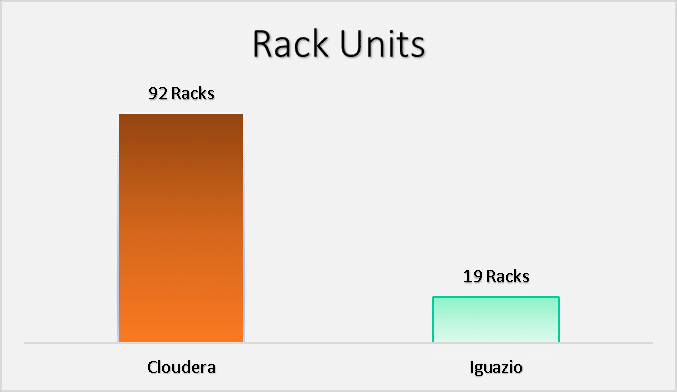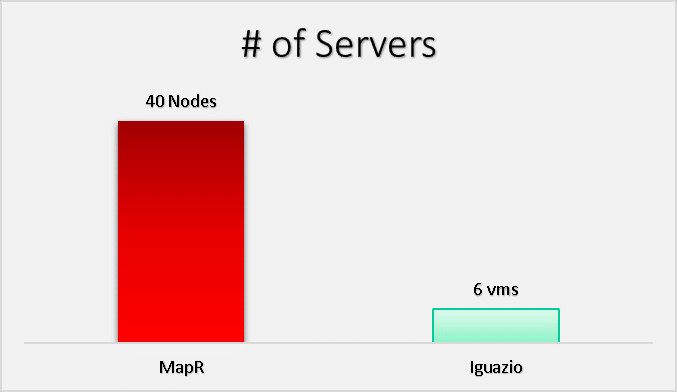AI, ML and ROI – Why your balance sheet cares about your technology choices
Bill Bodei | March 22, 2020
Much has been written on the growth of machine learning and its impact on almost every industry. As businesses continue to evolve and digitally transform, it’s become an imperative for businesses to include AI and ML in their strategic plans in order to remain competitive. In Competing in the Age of AI, Harvard professors Marco Iansiti and Karim R. Lakhani illustrate how this can be confounding for CEOs, especially in the face of AI-powered competition. Beyond cultural resistance to change, the accelerating pace of technological advancement has leaders facing the prospect of embracing the future as it’s being written. Statistics suggest that businesses haven’t yet reached critical mass with respect to ML having a significant effect on their balance sheets. This blog examines why that is, and what business leaders can do to operationalize machine learning applications faster and see positive business results sooner.
Obstacles to Business Impact
Last year, Forbes reported that only 4% of executives had successfully adopted AI into their businesses, often due to a lack of depth in their understanding of the technology and the value it can unlock. Fortune said, businesses using AI have yet to see meaningful impact. Why? For one…there is broad acknowledgment that more than 80% of AI and ML projects fail to deploy from research to production. This reality compounds the perception that ROI is elusive. This remains true even when the initial results from development are encouraging. Clearly the odds are stacked against those seeking to show ROI from machine learning projects. Lest we forget, the balance sheet still dominates the boardroom when it comes to securing investments. What’s a business leader to do?
Leadership requires courage to rethink how one’s organization will manage through transformative change. AI and ML are not necessarily products or projects; they are transformational. Embracing data science should compel reflection on Enterprise org charts and divisions of responsibility. Remember how virtualization blurred the lines between Enterprise IT groups that had traditionally been siloed to support the various components of distributed systems (i.e. Servers, SAN, Network, Database, App Dev). Similarly, the emergence of the full-stack developer skills and tools deserves examination and inspection. Afterall, how effective can a full-stack developer be if they’re constrained by an org structure that slows down (and often kills) ML projects’ path to production? Does the incumbent technology stack favor effective collaboration and efficient deployment? Or does the firm organize in such a way that it inhibits cooperation between the data scientist and the full stack developer? Are data scientists part of the business org, or part of IT? An org chart often reflects the technology choices the firm has made over time, so it’s important for leaders to consider whether they are structurally optimized and culturally able to adapt to change.
Evolving The Tech Stack
Beyond the org chart and its impact on human capital, leaders should confront any inertia surrounding the tech stack and its associated processes. The limitations (slow release cycles, interoperability challenges, etc.) of closed, proprietary systems stifle the pace of innovation. With the emergence of real-time applications, can the business really afford to wait for the legacy BI and analytics ecosystems to catch up? For example, are those complex, batch-oriented, poorly utilized, Hadoop-based infrastructures up to the task of meeting the needs of real-time inferencing? If so, at what price? Is the current technology ecosystem of the firm an enabler of process automation, or is it the primary obstacle preventing it?
The move to open, micro-service-based modular architectures is growing exponentially. However, the economic benefits of cloud-based microservices don’t always meet expectations either. The bane of many CFOs today is the volatility of their monthly cloud spend. “I thought cloud was supposed to save money! What happened last month?” said the CFO to the CIO. Going all in with a single cloud provider sometimes replaces one interoperability challenge with another, especially as the services being consumed scale. Buried within dozens of line items in one’s monthly cloud invoice lies poorly understood cloud service dependencies. This makes it difficult to manage an operating model with predictable expenses and cash flow.
The good news for enterprises is that there are opportunities to reap the business benefits of the open source community and enjoy a cloud native user experience wherever an application is (Cloud, Hybrid, On Prem or Edge). Platform providers like Iguazio deliver a cost effective, dynamic user experience that is agnostic to the location of the physical infrastructure and highly adaptable to complement and enhance both existing cloud and on-premise deployments.
Consider the following scenarios:
Global Investment Bank Wrestling with a Massive Growth Request for On-Prem Hadoop Environment
Impact of migration to a modern platform (on-premise - cloud-native user experience)
- 80% reduction in # of servers required
- 16X reduction is provisioned storage capacity
- 2/3rd fewer network ports
- 67% reduction in hardware and software investment
- Phased roll-out, compatible with, and complementary to, existing environment
Global Hardware and Software OEM - Migration from Batch Analytics to Real-Time Analytics
Consider the following benefits of migrating from cloud-based Hadoop to a modern, open, hybrid platform:
- 85% reduction in servers (40 nodes to 6 VMs)
- 88% reduction in lines of code (12,000 [Java] to 1500 [Python])
- 5X less expensive than comparable cloud services (Lambda, DynamoDB)
- From batch to real-time
- Vastly improved performance and ability to meet SLAs
Calculating TCO and ROI
Both aforementioned examples illustrate the business impact of the Iguazio data science platform against the context of legacy, Hadoop-centric environments; one is large and on-premise, the other, modest in size and in the public cloud. The empirical evidence of economic impact is provable. For the most part, they are financially focused on massive cost reductions related to acquiring and maintaining hardware and software (aka Total Cost of Ownership - TCO). And while TCO is important, it doesn’t tell the whole story.
Return on investment takes the math one step further because ROI isn’t limited to how much an organization saves by choosing one path over another; it’s a measure of overall impact. It is typically calculated as follows: Total benefits over time, minus TCO, divided by TCO. It is usually measured as a percentage, but sometimes it’s associated to a time period or “pay-back” period (i.e. the project paid for itself in 4 months). However, the true benefit of good ROI is the annuity of new top line benefits and/or ongoing bottom line savings.
ROI - Two Real World Examples
Consider Iguazio customer Payoneer, whose on premise deployment of the Iguazio platform transformed their fraud detection capabilities into real-time fraud prevention. Iguazio’s technology was particularly well suited to meet Payoneer’s needs for real-time performance at scale. Leveraging Iguazio’s native serverless functions, automation and an extremely fast multi-model data layer, they have all but eliminated fraud from their payment platform. Iguazio customer Quadient improved their time to market for AWS-based ML applications from six months to six weeks. Iguazio dramatically reduced the operational complexity and Quadient realized cost avoidance by not having to hire extra consultants to deliver their project. Instead they can scale their productivity while holding their costs flat.
To Sum Up
This blog has covered many reasons why business leaders remain hesitant to move headlong into ML. Recall that more than 8 of 10 machine learning projects don’t make it to production for reasons that range from a dearth of organizational experience to the weight of legacy investments. Regardless of the reasons why, innovation doesn’t wait for laggards. Consider learning more about how Iguazio is helping companies just like yours operationalize data science projects in a fraction of the time, at orders of magnitude less expense. It’s time to bring YOUR data science projects to life.




